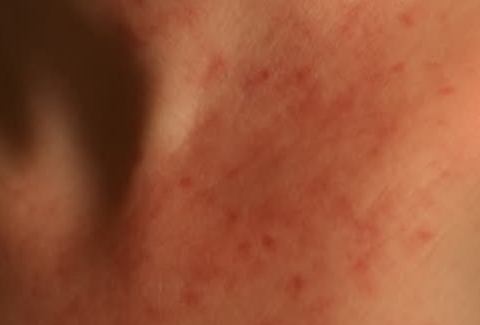What Is Fatty Liver Disease?Fatty liver disease occurs when too much fat builds up in liver cells. It comes in two main forms:Non-alcoholic fatty liver disease (NAFLD): Common in people who drink little to no alcohol, especially those with obesity, diabetes, or high cholesterol.Alcohol-related liver disease (ALD): Linked to heavy alcohol use over time.According to the American Liver Foundation, NAFLD affects about 1 in 3 adults in the U.S., and it’s on the rise — especially among people over 50.1. Unexplained FatigueFeeling sluggish all the time, even after a full night’s rest? Fatigue is one of the most common signs reported by people with fatty liver disease.This fatigue isn’t usually relieved by caffeine or naps.It’s often described as a constant “low energy” or “heavy” feeling.Why it happens: The liver helps filter toxins and support metabolism. When it’s overburdened, energy levels may drop.2. Mild Discomfort in the Upper Right AbdomenSome people experience a dull ache or pressure just under the right side of the rib cage — where the liver sits.It’s not usually sharp or severe.May come and go or be more noticeable after eating fatty meals.If this sounds familiar, mention it to your doctor during a routine visit.3. Sudden Weight Gain (Especially Around the Midsection)While weight gain has many causes, liver health plays a quiet role.Fatty liver disease may make it harder for the body to process fats and sugars effectively.Some people report an increase in abdominal fat, even with modest calorie intake.This “belly fat” is closely tied to metabolic syndrome, which often overlaps with fatty liver disease.4. Brain Fog and Trouble ConcentratingAre you forgetting names, misplacing keys, or losing your train of thought more often than usual?Brain fog can be a subtle indicator of liver stress.As liver function declines, toxins may circulate longer in the bloodstream, subtly affecting memory and focus.It’s not about alarm — but if you’re feeling “off,” don’t ignore it.5. Elevated Liver Enzymes on Blood TestsOften, fatty liver disease is discovered accidentally during routine bloodwork.Doctors may find elevated ALT or AST levels.You might feel perfectly fine — but your liver could be telling another story.Ask your provider what your liver enzymes looked like in your most recent checkup. It’s an easy way to stay informed.6. Dark Patches of Skin (Especially Around Neck or Armpits)Called acanthosis nigricans, these velvety dark areas are linked to insulin resistance — a key driver of fatty liver disease.May appear on the back of the neck, underarms, or groin.Often paired with skin tags or thickening of the skin.This visible sign is your body’s gentle nudge to look closer at your blood sugar and liver function.7. Nausea or Digestive Discomfort After MealsIf you regularly feel:BloatedSlightly nauseousUncomfortable after eating fatty or fried foods…it could be more than indigestion.As the liver becomes fatty, it may struggle to produce enough bile to break down fats efficiently, leaving you with post-meal discomfort.8. Swollen Belly or Legs (In Advanced Cases)Although uncommon in early stages, fluid retention (called ascites in the belly or edema in the legs) can occur if fatty liver progresses.Legs may feel heavy or look puffy, especially around the ankles.Belly swelling may be firm and persistent, not just “fullness.”If you notice these symptoms, it’s important to contact your healthcare provider quickly.What Increases the Risk of Fatty Liver Disease?Certain lifestyle and health factors increase the odds:Being overweight or obeseHaving type 2 diabetes or prediabetesHigh cholesterol or triglyceridesSedentary lifestylePoor sleep or sleep apneaProcessed food and sugary drinksEven without these risk factors, anyone can develop fatty liver disease — especially with aging.How to Support Liver Health NaturallyFortunately, the liver is one of the body’s most resilient organs, capable of healing itself with time and care. Here’s how to give it that support:Eat a liver-friendly diet:More leafy greens, whole grains, and fresh fruitsFewer processed foods, trans fats, and added sugarsIncrease water intakeStay physically active:Aim for at least 30 minutes of movement most daysWalking, swimming, or light resistance training can helpSleep well:Poor sleep has been linked to metabolic issuesTry to maintain a consistent bedtime and wind-down routineCheck your medications:Some over-the-counter drugs like acetaminophen (Tylenol) can tax the liver if overusedReview your list with your doctor, especially if you take multiple prescriptionsLimit alcohol:Even small amounts can aggravate a fatty liverWhen to See a DoctorYou don’t need to wait for dramatic symptoms. If you have risk factors or have noticed two or more of the signs mentioned, it’s worth bringing up during your next appointment.Your provider may suggest:A liver function test (LFT)An ultrasound or FibroScanA referral to a liver specialist (hepatologist)Catching this condition early can make all the difference.Share and ConnectKnow someone who might benefit from this info? Share this article with a friend or loved one.Want more healthy tips tailored for people over 50? Explore more content on our site or leave a comment below with your thoughts.DisclaimerThis article is for informational purposes only and does not substitute professional medical advice. Consult your doctor before making health changes, especially if you have existing conditions or take medication
Silent Threat: 8 Subtle Signs That May Point to Fatty Liver Disease
